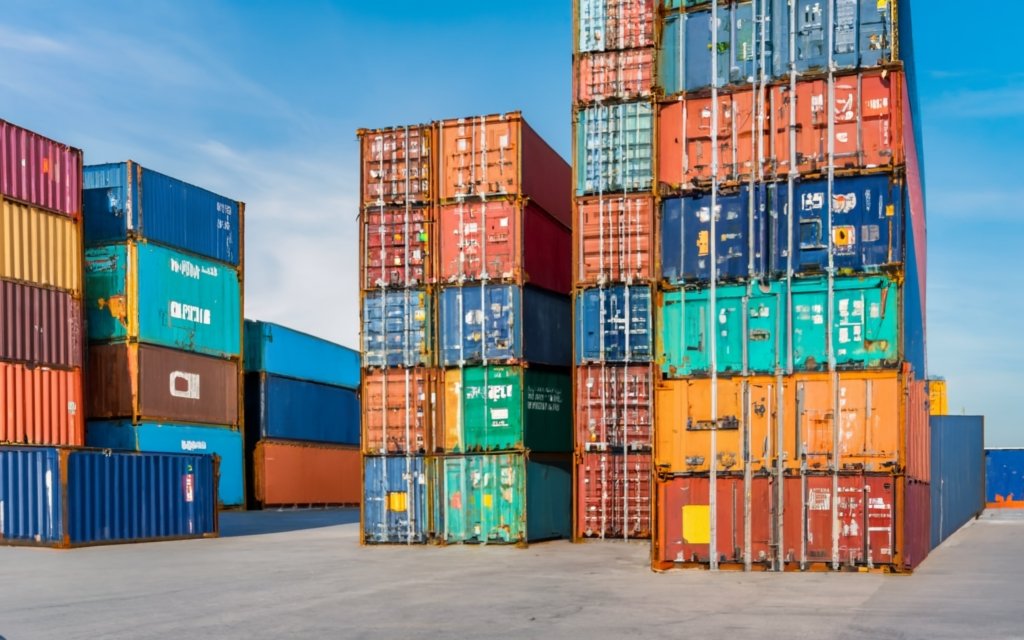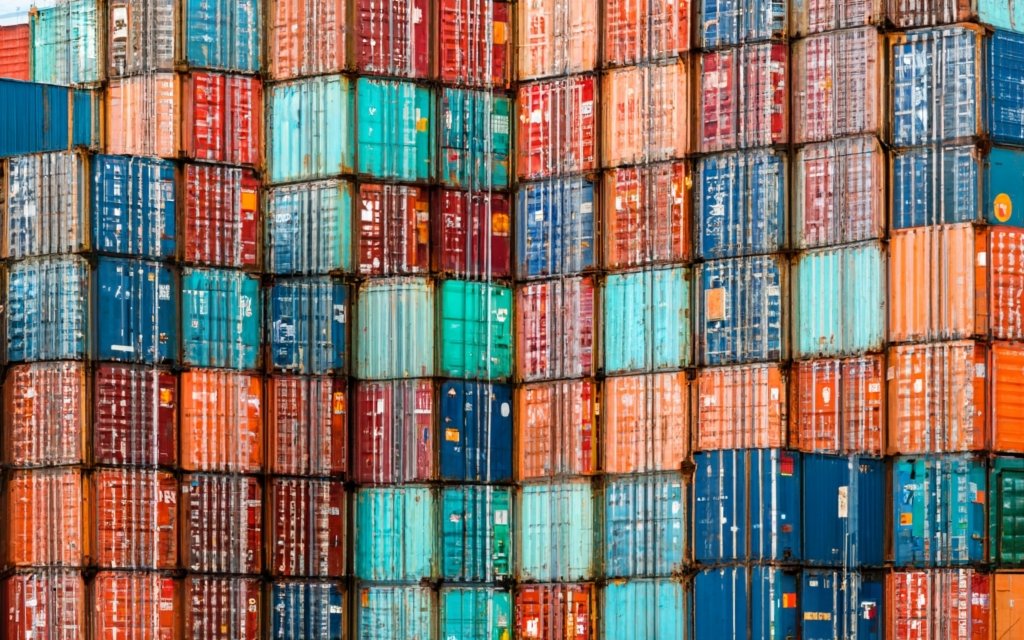Are you looking to maximize efficiency and save costs in your shipping process? One often overlooked factor that can have a significant impact on your bottom line is the dimensions of your shipping container. Finding the perfect dimensions for your container can streamline your logistics operations, reduce waste, and optimize space utilization.
In this article, we will explore the importance of choosing the right dimensions for your shipping container and how it can help you achieve your business goals. We’ll discuss the key factors to consider when determining the ideal size, including the type of cargo, transportation mode, and storage limitations.
By understanding the relationship between container dimensions and efficiency, you’ll be able to make informed decisions that can significantly enhance your supply chain operations. Whether you are shipping goods across borders or storing inventory on-site, finding the perfect dimensions for your containers is essential for maximizing space, minimizing costs, and ensuring smooth operations.
So, if you’re ready to take your shipping process to the next level, let’s dive in and discover how to find the perfect dimensions for your shipping container.
Why finding the perfect dimensions is important for efficiency and cost-savings.

Efficiency and cost-savings are crucial factors in the success of any business, and the dimensions of your shipping containers play a significant role in achieving these goals. The right dimensions can help you optimize the use of available space, minimize waste, and reduce transportation costs.
Having the perfect dimensions means maximizing the cargo capacity of each container, allowing you to transport more goods in a single trip. This can result in substantial cost savings by reducing the number of containers needed and lowering transportation expenses. Additionally, properly sized containers can improve loading and unloading efficiency, reducing handling time and labor costs.
Furthermore, finding the perfect dimensions can also enhance your overall supply chain efficiency. It ensures that your containers fit seamlessly into your logistics operations, from storage and transportation to warehousing and distribution. By eliminating wasted space, you can streamline your processes and improve workflow, leading to increased productivity and reduced operational costs.
In short, finding the perfect dimensions for your shipping container is not just about saving money, but also about maximizing efficiency and optimizing your entire supply chain.
Standard shipping container dimensions

Before diving into the factors to consider when choosing container dimensions, let’s first take a look at the standard dimensions commonly used in the shipping industry. Standard shipping containers come in two main sizes: 20-foot and 40-foot containers. These dimensions refer to the length of the container, and the width and height remain relatively consistent across different container types.
A 20-foot container, also known as a TEU (Twenty-foot Equivalent Unit), has a length of 20 feet, a width of 8 feet, and a height of 8 feet 6 inches. On the other hand, a 40-foot container, also known as an FEU (Forty-foot Equivalent Unit), has a length of 40 feet, a width of 8 feet, and a height of 8 feet 6 inches.
These standard dimensions have become the industry norm and are widely used for various types of cargo. However, it’s important to note that these dimensions may not always be the most efficient or cost-effective for every business. That’s why it’s crucial to assess your specific shipping needs and requirements when determining the ideal container dimensions.
Assessing your shipping needs and requirements

To find the perfect dimensions for your shipping container, you must first assess your unique shipping needs and requirements. Consider the type of cargo you typically transport, the transportation mode you use, and any storage limitations you may have.
The type of cargo plays a crucial role in determining the ideal container dimensions. Some goods, such as heavy machinery or oversized equipment, may require larger containers or specialized containers with custom dimensions. Fragile or perishable goods, on the other hand, may require additional protective measures, such as temperature-controlled containers or containers with extra padding.
The transportation mode you use also influences the container dimensions. If you primarily rely on intermodal transportation, where goods are transported using multiple modes (e.g., truck, rail, and ship), you need to ensure that your containers are compatible with each mode. This may require considering the dimensions and weight restrictions of different transportation vehicles or vessels.
Additionally, consider any storage limitations you may have at your shipping destination or warehouse. If your storage space has height restrictions, for example, you may need to opt for containers with lower heights to avoid any issues during unloading or storage.
By carefully evaluating your shipping needs and requirements, you can determine the ideal container dimensions that will best meet your specific demands and optimize your operations.
Factors to consider when choosing container dimensions.

When choosing container dimensions, several factors come into play. Here are some key considerations that can help guide your decision-making process:
1. Cargo volume: Calculate the total volume of the cargo you typically transport to determine the appropriate container size. This will ensure that you make the most efficient use of the available space.
2. Weight restrictions: Consider the weight limits imposed by transportation regulations and the capacity of the transportation vehicles or vessels you use. Oversized or overweight containers may incur additional fees or require special arrangements.
3. Stackability: If you stack containers during transportation or storage, ensure that the chosen dimensions allow for safe and stable stacking. This is particularly important if you plan to transport goods using container ships or stack containers in a warehouse.
4. Accessibility: Determine whether you need easy access to the cargo during transportation or storage. Some containers come with additional features like side doors or removable panels, which can facilitate loading and unloading.
5. Special requirements: If your cargo has specific requirements, such as temperature control or additional security measures, choose containers that can accommodate these needs. Specialized containers are available for goods like perishable items, hazardous materials, or high-value products.
By carefully considering these factors, you can select container dimensions that align with your specific needs and optimize your shipping process.
Benefits of customizing container dimensions

While standard container dimensions are widely used and readily available, customizing container dimensions can offer several benefits for certain industries or unique shipping requirements.
Customizing container dimensions allows you to design containers that perfectly fit the shape and size of your cargo. This eliminates wasted space and ensures maximum efficiency in loading and transportation. By customizing container dimensions, you can also optimize the use of available storage space, especially if you have specific storage limitations or irregularly shaped goods.
Additionally, custom dimensions can provide added flexibility in handling goods that don’t conform to standard container sizes. This is particularly valuable for industries that deal with oversized or irregularly shaped cargo, such as construction, automotive, or aerospace.
Customizing container dimensions may require additional investment and lead time compared to using standard containers. However, the long-term benefits in terms of improved efficiency, reduced costs, and enhanced cargo protection can outweigh the initial expenses, especially for businesses with unique shipping requirements.
Popular container dimensions for specific industries

Different industries have varying shipping requirements, and as a result, there are specific container dimensions that are popular within each sector. Let’s take a look at some popular container dimensions for specific industries:
1. Food and Beverage: The food and beverage industry often deals with perishable goods that require temperature-controlled containers. These containers are typically available in standard dimensions, such as 20-foot and 40-foot lengths, but with added insulation and refrigeration capabilities.
2. Automotive: The automotive industry frequently transports vehicles and parts, which often require specialized containers. These containers come in various sizes, including custom dimensions, to accommodate different vehicle types and sizes.
3. Construction: The construction industry often deals with oversized or irregularly shaped cargo, such as construction materials or heavy machinery. Custom container dimensions are commonly used to transport these goods, ensuring a perfect fit and maximum protection during transit.
4. Retail and E-commerce: With the rise of online shopping, the retail and e-commerce industry heavily relies on efficient shipping and logistics. Standard container dimensions, such as 20-foot and 40-foot containers, are commonly used to transport goods in bulk, ensuring cost-effective and streamlined operations.
These are just a few examples, and various other industries have unique shipping requirements that may necessitate custom container dimensions. It’s essential to understand the specific needs of your industry and collaborate with shipping and logistics experts to find the most suitable container dimensions for your business.
Tips for maximizing efficiency with container dimensions

Now that you understand the importance of finding the perfect dimensions for your shipping container and the factors to consider when choosing them, here are some additional tips to help you maximize efficiency:
1. Utilize space-saving accessories: Consider using space-saving accessories, such as pallets, racks, or dividers, to optimize the use of available space inside the container. These accessories can help secure and organize your cargo, preventing damage and improving efficiency during loading and unloading.
2. Implement efficient loading and unloading practices: Train your staff on efficient loading and unloading techniques to minimize handling time and reduce the risk of damage. Properly securing and arranging the cargo inside the container can help maximize space utilization and ensure safe transportation.
3. Optimize route planning: Efficient route planning can help minimize transportation costs and maximize container utilization. Consider factors such as distance, traffic conditions, and container availability to choose the most cost-effective and time-efficient routes.
4. Regularly review and optimize container dimensions: As your business evolves and your shipping requirements change, regularly review and optimize your container dimensions. This ensures that you continue to meet your efficiency and cost-saving goals, even as your operations expand or adapt to new market demands.
By implementing these tips, you can further enhance the efficiency and cost-savings of your shipping process, ultimately benefiting your business’s bottom line.
Cost-saving strategies with container dimensions

Finding the perfect dimensions for your shipping container is not only about optimizing space utilization but also about saving costs throughout the entire supply chain. Here are some cost-saving strategies you can implement:
1. Consolidate shipments: By choosing larger container sizes or optimizing cargo volume, you can consolidate multiple shipments into a single container. This reduces the number of containers needed and lowers transportation costs.
2. Explore intermodal transportation options: Intermodal transportation allows you to combine different modes of transportation, such as truck, rail, and ship, to optimize efficiency and reduce costs. By using containers that are compatible with various transportation modes, you can take advantage of cost-effective intermodal solutions.
3. Collaborate with shipping partners: Establish strong partnerships with shipping and logistics providers to leverage their expertise and negotiate favorable rates. By working closely with your partners, you can identify cost-saving opportunities and implement efficient shipping strategies.
4. Optimize inventory management: Properly sized containers can help optimize inventory management by reducing excess inventory and minimizing storage costs. By regularly reviewing and adjusting your container dimensions based on demand fluctuations, you can ensure efficient inventory turnover and avoid unnecessary holding costs.
5. Leverage technology and automation: Embrace technology and automation solutions to streamline your shipping processes and reduce manual labor costs. Utilize software tools for route optimization, container tracking, and inventory management to improve efficiency and reduce human errors.
By implementing these cost-saving strategies and leveraging the right container dimensions, you can significantly reduce shipping costs, increase profitability, and gain a competitive edge in the market.
Conclusion and final thoughts
Finding the perfect dimensions for your shipping container is a critical step towards maximizing efficiency and cost-savings in your logistics operations. Whether you choose standard container dimensions or opt for custom sizes, it’s important to assess your unique shipping needs and requirements and consider various factors such as cargo volume, weight restrictions, and accessibility.
By finding the ideal container dimensions, you can optimize space utilization, reduce transportation costs, and enhance overall supply chain efficiency. Additionally, implementing tips for maximizing efficiency, such as utilizing space-saving accessories and optimizing route planning, further enhances cost-savings.
Remember that container dimensions are not a one-time decision. Regularly reviewing and optimizing your container dimensions based on evolving business needs and market demands is crucial for long-term success. By continuously striving for efficiency and cost-savings, you can achieve a streamlined shipping process that drives growth and profitability for your business.
So, take the time to evaluate your shipping requirements, collaborate with experts, and find the perfect dimensions for your shipping container. Your efforts will not only result in tangible cost savings but also position your business for success in an increasingly competitive global market.




